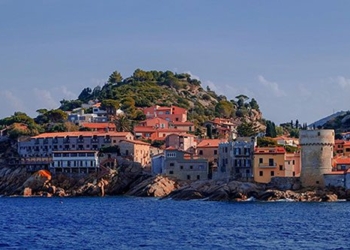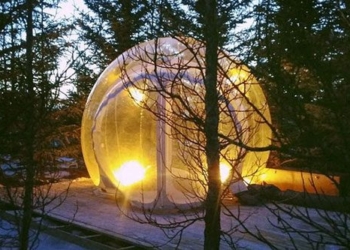Mongolia, a land characterized by vast steppes and nomadic traditions, holds within its borders a treasure trove of historical wonders. Known as the former capital of the Mongol Empire and the birthplace of the world-renowned Genghis Khan, Karakorum (or Khalkha Khorum) quickly became one of the most important and developed meeting points along the Silk Road.
The Ancient City with Historical Significance
Located in the Övörkhangai province of Mongolia and just 350 km from Ulaanbaatar, the modern capital of the country, the road to Karakorum is not only a picturesque journey but also rich in historical value.
This route was once a bustling trade corridor between the East and West, where merchants and artisans from Turkey, China, Uyghur, Sogdian, Hungary, Greece, Armenia, Alans, and Georgia gathered to trade silk, spices, tea, ivory, cotton, wool, and precious metals, as well as to exchange culture and knowledge.
Contrary to the notion that Genghis Khan’s empire was solely characterized by conquest and oppression, Karakorum emerges as a place where cultural, religious, and ethnic diversity thrived, fostering an environment of understanding and harmony. Karakorum was a religiously diverse place, home to Buddhist, Islamic, and Christian communities. There were at least 12 pagan temples, two mosques, one Christian church, and at least one Buddhist temple within the city.
Once a prosperous city of immense importance during the Great Khan (Genghis Khan) era, Karakorum went through a period of decline and was eventually abandoned for several reasons. Firstly, Kublai Khan, the successor of Genghis Khan, moved the capital of the Mongol Empire to Beijing just 50 years after Karakorum began to flourish.
This decision shifted the center of power away from Karakorum and contributed to its diminishing significance. Another reason was the city’s challenges, such as extreme temperatures and vulnerability to attacks, which may have deterred people from wanting to live there. As a result, Karakorum fell into ruin and became a heap of debris.
The Karakorum we see today may not resemble the time of the Great Khan. However, the recent commitment of the Mongolian president to focus on reviving Karakorum has shown efforts to restore the cultural values and reclaim the city’s former glory.
Pieces of the Past
As a nation with a nomadic culture, Mongolia no longer retains many marks of its past. Even today, much of Mongolia’s history as one of the largest and most powerful empires in the world remains a mystery.
Aside from “The Secret History of the Mongols,” there are not many written documents about the Mongol Empire. The limitation of direct perspectives from the Mongols also makes it more challenging to gain a comprehensive understanding of the history and cultural context of the empire.
Excavations in and around Karakorum have uncovered paved roads, remnants of brick buildings, underfloor heating systems, stoves, evidence of processing copper, gold, silver, iron, glass, jewelry, various bones, and birch bark, as well as currency from China and Central Asia, ceramics, and kilns. Many of these discoveries and the stories surrounding them can be found in the Karakorum Museum, an attractive and modern attraction in the city center.
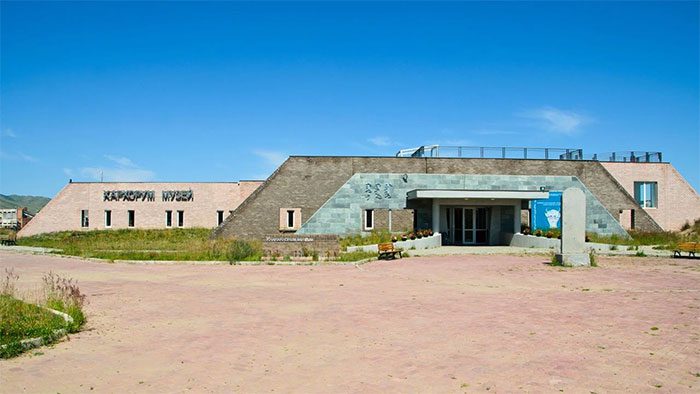
The Karakorum Museum showcases artifacts and discoveries that reflect Mongolia’s rich history. (Photo: Worawan Simaroj/Alamy Stock Photo).
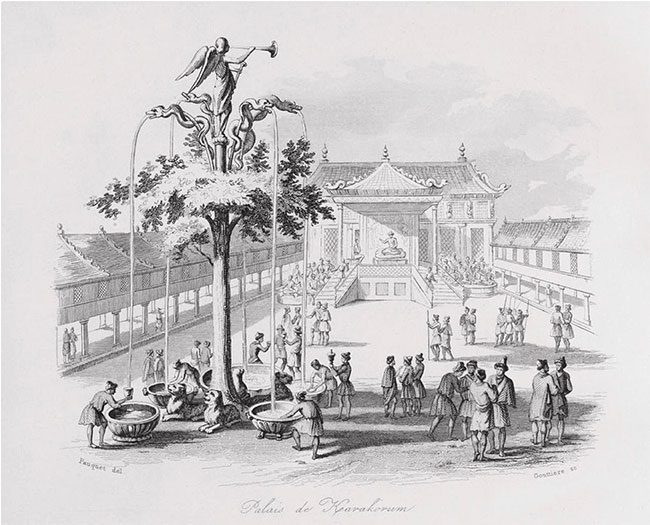
The Silver Tree, a tree-shaped fountain in Karakorum. (Photo: World History Encyclopedia).
However, no artifact or exhibition is as captivating as the story of the Silver Tree, a tree-shaped fountain. According to legend, the Silver Tree was adorned with silver fruits and contained various alcoholic beverages such as wine, fermented mare’s milk (airag), rice wine, and honey liquor served for Genghis Khan’s grandson and his guests. The Silver Tree remains undiscovered and likely destroyed in the past, but the story of this tree is enough to evoke curiosity about the past of the Mongolian royal family.
The Buddhist Temple from Ruins
The establishment of the Erdene Zuu Buddhist Monastery in Karakorum in the 16th century, during the time when the area was abandoned and turned into ruins, had a significant impact on the revival of this ancient city.
The Erdene Zuu Monastery, or “Jade Temple”, was constructed between 1585 and 1586. It is the oldest Buddhist monastery in Mongolia. Located in Övörkhangai province, about 2 kilometers northeast of Kharkhorin, the Erdene Zuu Monastery is listed as a UNESCO World Heritage site under the “Cultural Landscape of the Orkhon Valley.”
Abtai Khan, the leader of the Khalkha ethnic group and grandfather of Öndör Gegeen Zanabazar (a prominent religious and political figure in Mongolia in the 17th century), commissioned the monastery in 1585 outside the ruins of Karakorum, after meeting the 3rd Dalai Lama and Buddhism was declared the state religion in Mongolia.
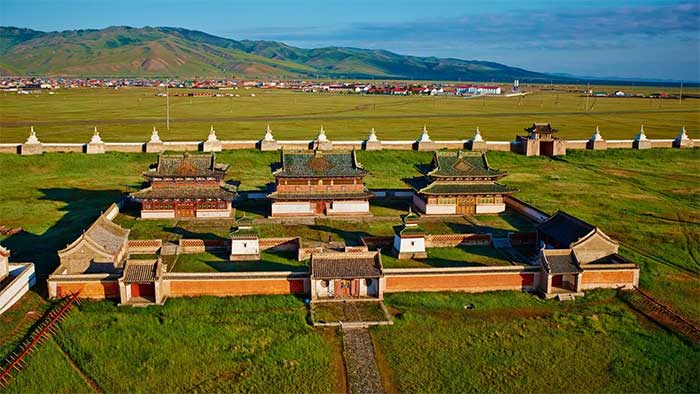
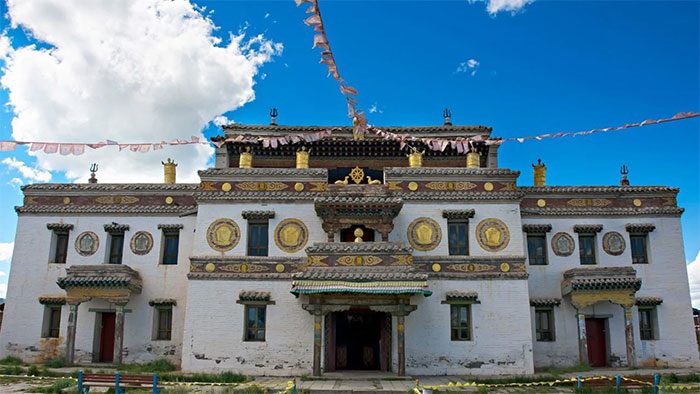
The Erdene Zuu Monastery in Karakorum is a prominent site in Mongolia. (Photo: Tuul & Bruno Morandi/The Image Bank RF/Getty Images).
The architecture of the Erdene Zuu Monastery reflects a blend of Mongolian, Tibetan, and Chinese artistic styles, showcasing the multicultural influences that have shaped Mongolia’s artistic tradition. The design of the monastery follows traditional Tibetan Buddhist architectural principles, with a central temple surrounded by a wall containing 108 stupas (Buddhist relics). These stupas represent the 108 volumes of the Kangyur, the Tibetan Buddhist scriptures.
The monastery covers an area of about 400 square meters, comprising a complex with temples and administrative buildings. The main temple, known as Zuu of Buddha, is adorned with elaborate artworks, including intricate carvings, colorful murals, and statues of Buddhist deities. The temple within the complex houses rich collections of religious artifacts, including thangka (scroll paintings), religious scriptures, and ritual objects.
At its peak, the Erdene Zuu Monastery had over 100 temples, approximately 300 yurts (Mongolian tents), and 1,000 resident monks. Today, the monastery is one of the holiest Buddhist sites in Mongolia, and Mongolian Buddhists claim to visit this complex at least once in their lifetime.
Preserving Ancient Traditions
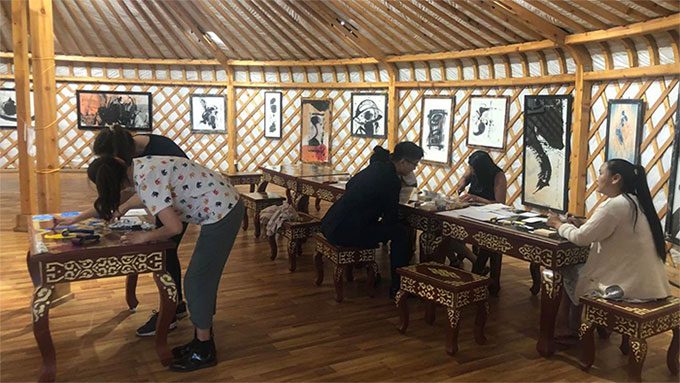
The Mongolian Calligraphy Center Erdenesiin Khuree has recently expanded and now offers more workshops and exhibitions. Photo: Mongolian Calligraphy Center Erdenesiin Khuree
Mongolian calligraphy holds an important place in Mongolia’s cultural heritage, reflecting the rich history and artistic traditions of the region. Right in the ancient city of Karakorum, Mongolian calligraphy developed and flourished as a unique form of expression. The Mongolian Calligraphy Center Erdenesiin Khuree is one of the most prominent centers for preserving and promoting Mongolian calligraphy.
The center serves as a gathering place for calligraphers, artists, scholars, and enthusiasts who share a passion for this traditional art form. The center provides opportunities to learn, practice, and appreciate the intricacies of Mongolian calligraphy.
With its recent expansion and the ability to host more workshops and exhibitions beyond Mongolian calligraphy, the center focuses on promoting all aspects of Mongolian heritage. Concerts featuring traditional Mongolian music as well as classes on khoomei, the traditional throat singing art of Mongolia, are held throughout this summer. Additionally, the center plans to open a pottery workshop next September.








































